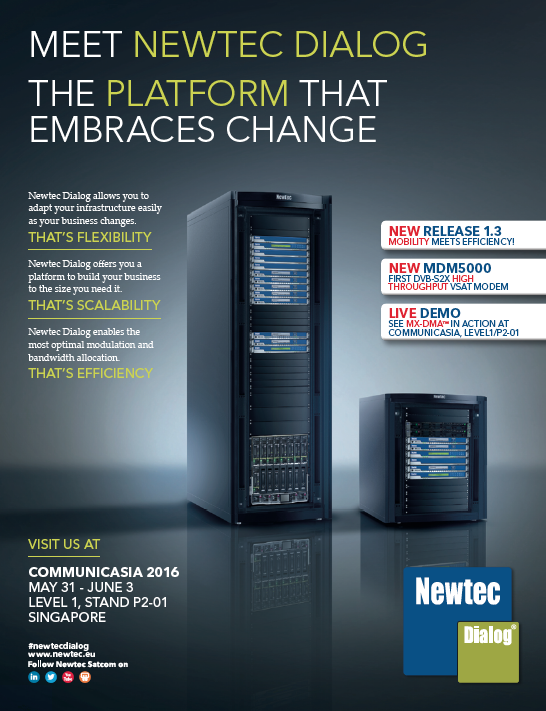A retrospective view into the 2015 broadcast market is almost entirely related to the surprisingly fast introduction and adoption of Ultra HD/4K TV technology.
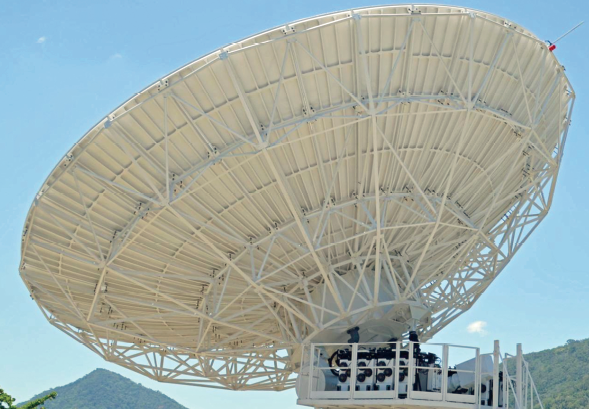
Starting with the early 2013 trials and proof of concept demonstrations, followed by live Ultra HD Broadcast over satellite in 2014, this new and exciting technology seems to have reached the maturity and is positioned as the market growth leader for 2015.
How can such remarkable success be explained? Certainly, Ultra HD, when compared with traditional HD1080p channels, comes with four times higher resolution, more colors, better contrast, and better pixels, but all of those elements alone cannot explain everything.
Rather, it is what SES describes using a beautiful metaphor—”The Virtuous Circle.” All the critical elements are in place and they seem to stimulate one another for a strong and successful business outcome. The highly demanding standards are in place, the demos are impressive, the supporting technology is in place, the content and the distribution networks are growing fast and the cost is dropping substantially.
The Market Growth
Similar to the SD versus HD transition 10 years ago, Ultra HD market penetration is driven by TV manufacturers. The growth rate of sales, due to a massive price reduction, is impressive.
Starting with 1 percent market share in 2014, over the next four years the Ultra HD sales will exceed 50 percent of the market in the USA alone. 2015 was definitely a milestone year, with growth exceeding 200 percent compared with 2014 (more than six million Ultra HD TVs sold in USA). In the next three years, the estimate is that, worldwide, more than 220 million households will own an Ultra HD TV.
This exponential growth will apply corresponding pressure on content availability. Starting with few Ultra HD channels available today, by 2019, more than 1,000 channels will be broadcasted in Ultra HD.
Some recent perspective will help to understand this trend.
• 2013, The Brazilian National Research and Education Network (BNREN) was a pioneer in using UHD 4K for live heart surgery training
• 2014, FIFA Soccer World Cup, Brazil, broadcast the first live soccer game in Ultra HD, using a unique worldwide teleport architecture, based on GaN SSPAs only
• 2014, live rock concerts were broadcast Ultra HD 4K from Berlin
• 2016, DirectTV plans over 30 new UHD 4K channels
• 2019, it is estimated more than 1,000 UHD channels will be broadcast, mostly for live sport events and video on demand
This rapid demand for more and more Ultra HD content leads to the main questions...
- Are we ready in the broadcast industry to serve all these customers by providing this highly bandwidth-demanding content? Four times resolution means four times more bandwidth, and that is not a trivial task, both from a technological and cost point of view.
- Is the distribution network adequate or we will have to replace it from the ground up?
- Are we certain that today’s investment is adequate and future proof for Ultra HD deployment in the near future?
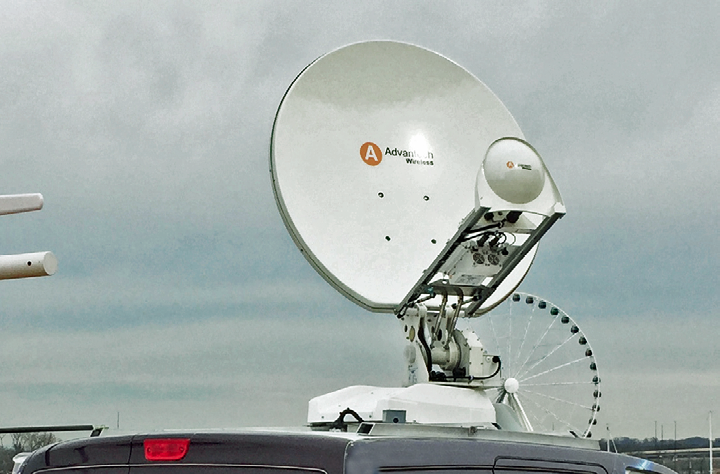
The purpose of this article is to provide a guideline and to identify the risk mitigating techniques for business decision makers who must answer these challenging questions. One element is certain: customers will most likely not pay four times more for four times higher resolution.
If the investment today is for either an SNG truck, or a large DTH Teleport, and there is no taking into account the next year’s demand for Ultra HD content, there could well be major unnecessary risks to a company's ROI—even to the point of questioning the relevance of the entire business model.
If the belief is that there is still time to decide later on a course of action, such could well be an incorrect judgment. Up until now, the current Ultra HD penetration rate is four times faster than the migration from SD to HD 10 years ago, so demand is ramping far faster than anticipated.
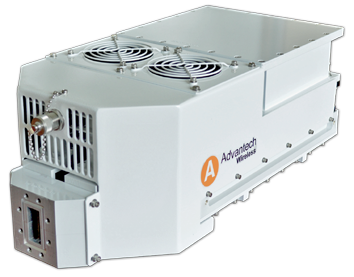
Technology Challenges
How is the satellite industry positioned to be a major player in the Ultra HD market?
The answer is extremely positive. Today’s satellites are powerful and they are Ultra HD ready. Once the broadcast network is deployed from a DTH Teleport, adding more users over an entire continent requires little to no investment.
Compared to that, the terrestrial IP ground infrastructure will require major capital spending for the upgrades that will be required to support the heavy Ultra HD bandwidth demands. Worth mentioning is that an Ultra HD channel will require as much as 30 Mbps and these data rates can only reach today a minority of users via terrestrial IP networks. Simultaneously, 100 percent of households can be reached today with Ultra HD Broadcast via satellite.
According to the latest market reports, as much as 19 percent of all IP addresses in the USA have access to more than 1.5 Mbps IP speeds. That number in Canada is higher, up to 35 percent. However, these are the total number of IP addresses and not consumer home addresses only. The real percentage of households is certainly lower than that number.
1.5 Mbps will most likely not allow Ultra HD over terrestrial links. Today, Netflix has launched their premium services at data rates of 15.6 Mbps, but this is with a reduction in the number of frames, and with lower resolution. In South Korea, UHD services are provided at about 32 Mbps data rates.
As we have suggested above, four times higher resolution means four times the bandwidth requirements. That does not take into account the provisions for higher frame rates, which are expected to reach 100 frames per second, which are required by true Ultra HD live sport events and which will demand even more bandwidth.
This will be the first challenge that the technology is expected to solve. How do we transmit this weighty content with little or, if possible, no additional cost?
In early 2013, a new standard for video encoding was proposed. The High Efficiency Video Coding (HEVC) standard, or H.265, will provide twice the compression achieved by today’s H.264, or MPEG 4 standard, which made the HD Broadcast possible a few years ago. Currently, major development programs by various manufacturers are in place worldwide to complete and validate the hardware design. This will be one of the key enablers into successful Ultra HD deployment.
In parallel with better video encoding techniques, the need for better use of satellite spectrum in terms of bits per Hz became mandatory, true now more than ever before. Transmissions using four times more bandwidth simply cannot be accomplished; instead, content must be squeezed into, ideally, the same bandwidth required today by a HD channel.
In line with this mandate, the new DVB-S2X extensions are now standardizing on higher order modulations and better error correction rates—now talking about 64 QAM, 124 QAM, 256 QAM over the satellite, which at least, in theory, implies a major cost reduction in bandwidth.
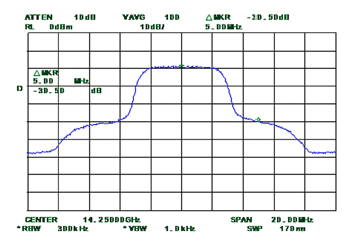
Figure 1. SpectrumRegrowth, GaN based SSPA, 1 dB back off from Psat.
However, this technology does arrive with strings attached—nothing is free.
Shannon’s theorem has brilliantly and simply stated that the amount of information that we can transmit cannot exceed the capacity of the channel. In this case, the capacity of the satellite channel is the bandwidth available for a certain Signal to Noise Ratio (SNR).
More information can be pushed if more bandwidth is obtained. Assuming that extra bandwidth can be acquired in an economical way that still makes business sense, in order to transmit higher bandwidth, more RF power in the sky is an absolute necessity.
Four times more bandwidth requires four times more RF power, and that now becomes an issue. How, and from where, is four times x more RF power going to be obtained? Are our existing amplifiers rated for such an increase? Most likely not, as providers all purchase on budget to only as much RF power as is needed for SD and HD links. This information is based on Advantech Wireless' 10-15 years digital broadcast experience.
With DVB-S2 and DVB-S2X, of course bandwidth can be reduced by using higher order modulations, but these degrade SNR, and again, more energy is required to transmit.
Additional energy can be derived from a larger antenna, but if there is already a 2.4 meter antenna on a truck, how much or how many larger antennas can be installed? The maximum power for antennas has probably already been reached.
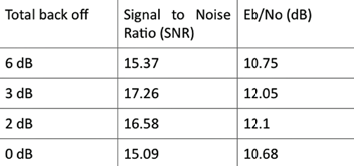
Table 1. GaN based SSPA, single carrier mode, 16 APSK. SNR and Eb/No versus back off 16 APSK GaN SSPA performance, single carrier.
Higher energy from the amplifier is also needed, and the same situation is presented for a solution. The SNG truck, or the teleport, will be required to deliver perhaps four times higher power in order to compensate for the SNR degradation. Can that be done today? Most operators do not have these 6 dB link margins in their existing budget.
The good news is that the solutions are already present and, surprisingly, not at higher cost. All that is needed is careful planning today for what will be tomorrow’s reality.
The Gallium Nitride (GaN) Solid State Power Amplifier (SSPA) Solution
Back in 2010, Advantech Wireless launched a new line of SSPAs based on GaN technology. Today, these new SSPAs are considered a major development milestone in the satellite industry. What the company achieved was building more compact, higher energy efficient and higher linearity amplifiers than anything previously had been available on the market. Advantech Wireless managed to:
>> Reduce weight and size by up to 70 percent. This had by itself high value, as space and weight on an SNG vehicle antenna is limited. Most of the SNG trucks built up to 2010, used 400W or 750W HPAs. The older generation SSPAs were too big to be installed on these antennas. The new GaN-based series allowed that with large margins for future growth.
>> Reduce energy consumption by 50 percent. We are also limited on how much energy we can take from the truck generator, and this energy saving allowed us to install higher RF power SSPAs, without exceeding the power consumption budget.
>> Double the linearity. That is a critical parameter. Linear power is what we use to transmit to the satellite, and here not all amplifiers are equal. Traveling Wave Tubes (TWTs) need a certain back off, and older generation SSPAs needed less back off but were too big and heavy. Now, GaN-based SSPAs need much less back off.
In other words, a 400W TWT was replaced with a 200W GaN based SSPA (see Figure 1.) without link deterioration in terms of Bit Error Rate (BER). Moreover, we can now install on the same truck a 400W or a 600W C-band GaN SSPA, and provide exactly the margins we are looking for, even if starting tomorrow we need to transmit in Ultra HD only.
There is simply no other technological alternative in order to do that.
Table 1; results of testing a GaN SSPA carrying 16APSK modulated traffic, from 6 dB back off to saturation. It is now obvious that we can transmit at much higher power and still avoid degradation in SNR.
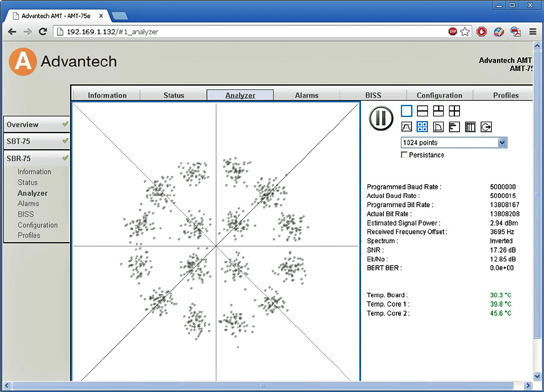
Figure 2. 16 APSK, 2 dB back off.
But what is the solution if a DTH Teleport has to be built or upgraded in order to be able to sustain Ultra HD traffic? A radical solution is needed.
The traditional way to build teleports over the past 40 years was to construct a massive shelter and then keep all equipment indoors. This was due to the technological limitations at that time. Very large antennas had to be used as well as high power klystrons, with expensive filter combiners, air conditioning, all with uninterruptable power supplies.
These klystrons were limited to a single transponder—to broadcast in multiple transponders, they had to combined indoors and required multiple antennas with a very expensive wave guide system. By the time the antenna was reached close to 80 percent of the power was lost. All these were good and working, as long as small carriers were transmitted using BPSK and QPSK modulation.
However, in an Ultra HD broadcast environment, such can no longer be afforded. More power needs to be transmitted, higher modulation and all within a much smaller budget. All RF losses must be avoided and the power budget optimized. Therefore, a full outdoor solution is required, preferably integrated with the antenna.
In 2013, Advantech Wireless was contracted to build two new teleports in Brazil that would support video traffic over all transponders of an SES6 satellite. These teleports supported the first Ultra HD live broadcasting in 2014 for the FIFA Soccer World Cup games.
In a nutshell, the customer had the choice of installing 4x antennas, build multiple shelters, use multiple indoor klystrons with expensive UPS lines, as had always been done over the past 40 years, or look for another more advanced, and quite radical option.
All of the requirements were replaced with a single antenna, on which Advantech Wireless installed on a mobile platform two 2.4kW Ku-band GaN based SSPA systems. These allowed all transponders to be covered on SES6, both polarizations, with extremely large margins. Most importantly, although built in 2013, these two teleports are Ultra HD ready. At the end, the savings in capital and operating expenditures exceeded $250 million.
These teleports made history back in 2014 and, as a result, Advantech Wireless was awarded “Teleport Technology of the Year 2014” by the World Teleport Association last year.
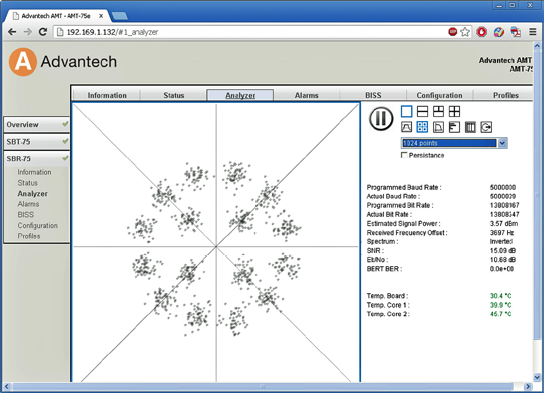
Figure 3. 16 APSK, 1 dB back off.
The purpose of this article is to highlight some of the new technologies that are now available as related to Ultra HD 4K TV future rollout. Careful planning and risk mitigations techniques should be involved at early stages in order to avoid cost overruns and deception later. Below is a summary of the recommendations:
Ultra HD 4K brings definitely many opportunities to the satellite industry. It is up to us to benefit with careful planning now. There are technological solutions and advances that allow us to provide these services, at even lower cost than current SD and HD services.
Ultra HD requires higher bandwidth then SD and HD. We will need to use new HEVC encoders, and perhaps new DVB-S2X modulation and FEC rates. All these will require much higher power to transmit.
If you are building today an SNG truck, consider the use of GaN based SSPAs, as they are the only solution available to offer this extra power.
If, based on the link budget calculations, demand can still not be covered with a C-band system, consider using Ku-band, as for the same antenna diameter, the effective isotropically radiated power (EIRP) will be higher.
If an older DTH Teleport is being operated, or the plan is to build a new one, consider an all outdoor GaN based approach. This will allow provision Ultra HD services and will also reduce existing OPEX to a fraction of current costs.

Mr. Cristi Damian joined Advantech Wireless in 1995 where he held various positions in Operations, Manufacturing, Sales, Engineering and Customer Support. Prior to Advantech Wireless, he acquired experience as a hardware engineer in various
high-tech companies.
Mr. Damian holds a Master’s degree in Electrical Engineering from Concordia University.


